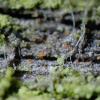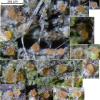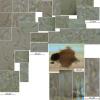
18-11-2025 13:59
Nogueira HéctorNovember 14, 2025 Brazuelo (León) SPAIN Hymenosc

17-11-2025 19:14
herman lambertApothécie discoïde 0.6 cm diam., orangeFace hym�

17-11-2025 21:57
Philippe PELLICIERBonjour,Récolté sur bois de feuillu mort dur, no

15-11-2025 23:22
Mario FilippaHello,this is what I think to be Hymenoscyphus mac

15-11-2025 20:25
 Riet van Oosten
Riet van Oosten
Hello, Found by Laurens van der Linde, Nov. 2025

14-11-2025 18:31
 Lothar Krieglsteiner
Lothar Krieglsteiner
Hello,can somebody provide me with a file of:Rothe

12-11-2025 09:25
 Viktorie Halasu
Viktorie Halasu
Hello, I need help with a pale terrestric Pseudom

11-11-2025 20:16
Bohan JiaHi, lastly I have found these tiny yellow decayin
Trichonectria ? Bionectriaceae ? Between algae on Picea abies.
Perz Piotr,
27-09-2009 00:05
Yesterday I find this little, orange "nectrioid" fungus between algae on Picea abies wood. Because of short, hyaline, thick-walled hairs I'm thinking about Trichonectria. The hairs are septate.
Subiculum abundand, white, all over the base of perithecium.
Because of characteristic ascospores (asci are 8-spored) I think, you can help me to identifi this fungus with the macrophotos and micrs of ascospores.
best wishes
Pimpek
Perz Piotr,
27-09-2009 00:07
Perz Piotr,
27-09-2009 00:08
Perz Piotr,
27-09-2009 00:10
Re:Trichonectria ? Bionectriaceae ? Between algae on Picea abies.
very similar, macroscope and habitat & ecology was my found of Psoroglaena abscondita (Coppins & Vězda) Hafellner & Türk - but totally w/o hairs.
I think the ascospores are very characteristic, They are 2-celled (= 1-septate), also inside of living asci.
Note, that the perithecim collapsed when dry,
The hyaline, septate, thick-walled projecting hairs are mostly present around the ostiolar region (exactly like in Trichonectria rubefaciens (Ellis & Everh.) Diederich & Schroers)
thank you
Piotr
I think the ascospores are very characteristic, They are 2-celled (= 1-septate), also inside of living asci.
Note, that the perithecim collapsed when dry,
The hyaline, septate, thick-walled projecting hairs are mostly present around the ostiolar region (exactly like in Trichonectria rubefaciens (Ellis & Everh.) Diederich & Schroers)
thank you
Piotr
Javier Etayo,
27-09-2009 17:23
Re:Trichonectria ? Bionectriaceae ? Between algae on Picea abies.
Your sample could fit well in Trichonectria, a genus with several lichenicolous species. I have not seen this spores in any of the lichenicolous species, this and its habitat made it very interesting.
Best wishes. Javier Etayo
Best wishes. Javier Etayo


